Resources

Richard Newton Assistant Professor of Religious Studies Elizabethtown College When I signed up to teach the Bible and Race in the USA, I didn’t know that my students would be able to live stream the lynching of Eric Garner and Tamir Rice. No one told me that modern courtrooms would accept a testimony from one who could liken Michael Brown to a demon. And did I mention that my undergraduate seminar was divided evenly along the color line—three white students with two black students and myself? Colleagues at my new school were excited and nervous for me. No one knew...
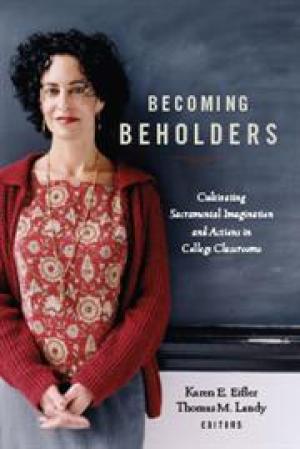
This thought-provoking, insightful collection of twenty articles is directed toward teachers at Catholic colleges, but it is applicable to anyone who teaches in higher education and who comes to that task from a faith perspective. A wide variety of disciplines are represented, including art, literature, writing, chemistry, math, economics, sociology, communication, history, Spanish, and, of course, religion. The book’s title and subtitle are suggestive. The title derives from a Hopkins poem, “Hurrahing in Harvest”: “These things, these things were here and but the beholder / Wanting” (xii). “Sacramental imagination” in the subtitle is described as “a deeply Catholic perspective on the world, one that sees God manifest throughout the natural, created world” (ix). This perspective is cultivated through “Actions in College Classrooms.” The authors therefore discuss in detail activities in courses that they have taught that relate to the topic of the book. They often quote from students’ journals or essays as a means of demonstrating student learning. They also describe activities that go on outside the classroom, such as trips to museums, personal reflection during the week, and service with nonprofit agencies as additional ways by which the sacramental imagination is cultivated. Several of these essays have appeared elsewhere, some in publications related to Collegium, a Catholic organization that describes itself as “a colloquy on faith and intellectual life”. (Indeed, the book is featured prominently on the group’s webpage.) The organization, Contemplative Mind in Society, is mentioned, as is the work of Parker Palmer. One, then, could see this book as part of a larger conversation about spirituality and education. Here a Catholic perspective on higher education is brought to bear. Incidentally, two authors have Wabash connections: Angela Kim Harkins was a Wabash fellow, and Anita Houck acknowledges a Wabash colloquy. The title of their essays are both representative: Houck’s “You Are Here: Engagement, Spirituality, and Slow Teaching,” and Harkins’ “Cultivating Empathy and Mindfulness: Religious Praxis.” Other interesting titles (and topics) include economist Peter Alonzi’s “Pauses,” English professor Melissa A. Goldthwaite’s “Rhetorics of Silence: A Pedagogy of Contemplation, Empathy, and Action,” and communications professor Jonathan M. Bowman’s “Mutual Benefice: Helping Students Find God in a Research Methods Course.” Readers of this resource might be tempted to read only the articles written by professors of theology or religious studies. That approach might be a good entry point to the book, but the treat is to see how teachers in various disciplines are cultivating sacramental imagination in their classrooms. A particularly intriguing example was Stephanie Anne Salomone’s use of a “This I Believe” essay in a geometry course, thus “Linking the Mathematical Axiomatic Method with Personal Belief Systems.” The concluding sentence of the book was fitting and invites reflection. Jonathan M. Bowman writes, “I have reinvigorated my own experience of transcendence as I teach and mentor my undergraduate students” (313). Reading this book – and pondering its implications for our teaching – can help us too “become beholders.”
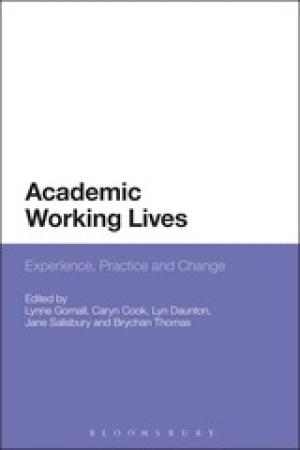
This compendium presents the reader with a myriad of international studies featuring methods of analysis on topics as varied as U.K. governmental policy regarding postsecondary education to the email habits of academics. Despite the disparate nature of the topics, methods, and analyses of these chapters, they each orient themselves around a central axis . . . that of the academic’s working life. The editors/research team assembled these short, seemingly splintered studies into the weighty tome that sits before me. The book itself exemplifies the momentum behind the project; it effectively registers the impact that thirty years of ideological, economic, technological, and political change has had on the work life of the academic. Long gone are the seemingly halcyon days of the lone academic researcher plumbing the depths of musty texts in the library. Many of these studies touch on the nature of academic work and how regulating agencies around the world (although these studies focus on the U.K., U.S., Japan, and a few other locations) have attempted to quantify the work (research, teaching, grant writing, administrative tasks, and so forth) done by academics. These various authors do not shy away from addressing how issues such as social class, gender, and social and political hierarchies continue to play out within academic worlds. A particularly compelling chapter highlights some of the divergent as well as shared problems among researchers in a number of institutions in African countries and Ireland. While other texts and studies have focused on the success or failure of educational reform in regard to student or institutional success, these studies look to the effect (good or bad or nil) these changes in educational policy, administrative practices, budgetary restrictions, technological innovations, and political and economic social narratives (such as commodification of education) have on the quotidian aspects of academic life. A few especially compelling chapters stuck out from the rest. One of these is Kelly and Boden’s “How Management Accounting Shapes Lives,” which explores the problem of the university-as-business ethos by tracking a professor seeking to combine outside research and teaching responsibilities and the skewed accounting which blocks him from doing so. On a more philosophical note, some authors wrote about what it means to examine, evaluate, and audit academic work, and others asked how grants, contract work, and contingency in academia create less than desirable conditions not just for academics but also for the research they produce. In her chapter on learning technologies, Alison Hudson utilizes Pierre Bourdieu’s theoretical nomenclature (symbolic violence and social capital, for example) to illustrate the changing dynamics in the fields of education and governance. She pinpoints the beginning of the radical shift in academics’ lives to the moment when “practice became increasingly influenced not by fundamental values and ethics, but by technologies of control aimed at changing the characteristic of the field” (248). Encyclopedic and topical, the editors have grouped these writings into five themed parts each of which contain a set of short, readable studies. Although the text is over three hundred pages, it is arranged in a reader friendly manner. These studies provide valuable reading for administrators, policy makers, academics, and anyone interested in the working lives of academics around the globe.
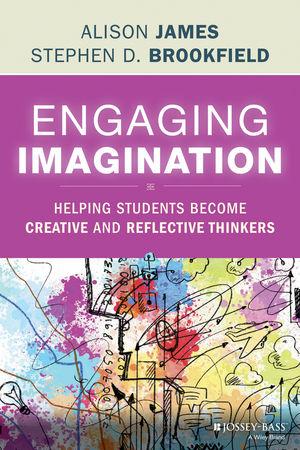
Engaging Imagination: Helping Students Become Creative and Reflective Thinkers poses a challenge to educators across fields to reach beyond traditional teaching and learning methods. Authors Alison James and Stephen D. Brookfield ask, “Why are we not open to varied expressive modes – video, art, drama, poetry, music – to gauge students’ learning? If there are multiple intelligences (Gardner, Frames of Mind: The Theory of Multiple Intelligences [New York, NY: Basic Books, 2011]), if students’ diverse histories, cultural backgrounds, racial identities, and personalities mean teaching and learning is inevitably complex (Allen, Sheve, and Nieter, Understanding Learning Styles: Making a Difference for Diverse Learners [Huntington Beach, CA: Shell Education 2010]) then shouldn’t our approaches to helping and assessing learning exhibit a similar variety” (4)? The book invites us to imagine “what if” (xii) students were given opportunities to explore their learning beyond lectures, discussions, reading, and writing. The authors do not intend to solve the institutional or assessment challenges of teaching more creatively, but to pose ideas for reflection and exploration. Each chapter provides websites to further engage concepts and activities described in the book. Part I, “Understanding the Role of Imagination in Learning,” argues in three chapters that students learn more effectively when they are given freedom to reflect. This is an engaged reflection, involving: creativity – where students are given ways to “unravel . . . question . . . ponder . . . clarify . . . demonstrate” (57); imagination – which focuses on possibilities; and play – learning engaged from new angles, leading to spontaneous insights. Part II, “Engaging Imagination Tools and Techniques,” forms the heart of the book and may prove to be a valuable resource to liven up syllabi and classrooms. In each of six chapters, a different way of teaching and learning is presented; two to eight activities are also described in detail, providing practical illustrations. Just one activity from each way of teaching and learning is included here. (1) Visual learning: Students create collages in response to a discussion question. (2) Story and metaphor: Students symbolize key learning experiences on a timeline. (3) Kinesthetic learning: Students use Legos or other concrete objects to construct models of their thinking-in-process. (4) Attending to physical space: A special space in the classroom (or an inflatable “pod”) can serve as a place where students, alone or in small groups, can video their live reflections. (5) Asking non-leading questions: Students are guided to think more deeply about their own beliefs by questions that ask for analogies, opposites, or ways of recognizing certain qualities. (6) Community impact on learning: Students map the various communities in their spheres of life to observe how each shapes their perspectives. Part III, “Negotiating the Realities of Engaging Imagination,” provides activities for students to navigate energy levels and emotions while learning. In a final chapter authors share how their own imaginations were engaged through the writing process. Engaging Imagination is not aimed so much at educators helping students to think creatively and reflectively about course content, but rather at presenting ways educators may help students to reflect on themselves as learners. Thus the subtitle can be misleading. However, most of the learning activities could be adapted for deepening student understanding of course content. The emphasis on student self-awareness contributes to the current pedagogical shift from teaching to impart information towards facilitating and empowering student-directed learning in a variety of classroom and online settings. Little is offered by way of guiding students towards a directed end; indeed doing so would negate the purpose of many of the activities. It is therefore significant that authors acknowledge their work as a complement to, rather than replacement of, traditional forms of teaching and learning. We are left with the same challenge students will have as a result of “engaging imagination”: to appropriate the insights gained.
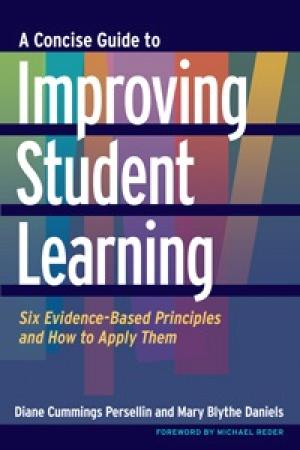
The authors of this brief resource provide educators with six of the most important principles to emerge from recent research on human learning. Taken together, these principles provide the elements of a framework for effective constructivist pedagogy, particularly in higher education: Desirable difficulties increase long-term retention (5-7) Meaningful and spaced repetition increases retention (12-13) Emotion and relevance deepen learning (15-16) Multisensory instruction deepens learning (25-26) Small groups engage students (32-33) Formative assessment or low-stakes evaluation strengthens retention (43-46) The authors offer a series of concrete “instructional applications” as well as an annotated summary of a few of the most salient research studies relevant to each principle. Interleaved with their treatment of the principles, concrete applications, and annotated bibliographies, the authors provide outlines of workshop sessions that address specific instructional techniques funded by the various principles under discussion. The main body of this highly practical book ends at page 60. Three appendices (on course design, lectures, and class discussions) bring the book to page 78. The final quarter of the book is taken up with extensive bibliographic references. The book has several strengths. It harvests a burgeoning body of literature on human learning in a highly accessible manner. It backs up its claims with relevant research. Specific instructional techniques and ideas that have solid grounding in empirical research on learning are also offered. Ample bibliographical references appear at every turn. Useful guidelines for improving student learning positively emerge from the book. The weaknesses of the book arise from its strengths. The authors’ treatment of the six principles, while insightful, come across as thin. Explicating and unpacking each principle in five or six pages as opposed to the one or two pages given to the task in the book would have aided the process of internalizing the concepts involved. The practical applications in each section have a great deal of merit, but the added interspersed workshop materials make the book somewhat difficult to follow. I would have preferred a less cluttered organizational structure. While I appreciate the authors’ intentions to offer a clear, pithy, and brief resource for faculty who want to make the shift toward more learning-centered pedagogy, the book as a whole comes across as a series of edited outlines for in-service presentations at faculty meetings. A lot less bibliographical material and a lot more explanation of key concepts would likely help the newcomer to discover the way of thinking about learning and teaching advocated in the book. This book might serve as a useful resource for faculty members who want to move away from the traditional orientation of the “sage on the stage” who suffers from “content tyranny” and toward a more engaged pedagogy, but only for those motivated by the books’ remarkable brevity. It would work well as a brief introduction for doctoral students who have to take a required course on teaching in higher education. It also could work well for faculty who already know this material and who want to have a quick summary at their fingertips when designing syllabi or who have the opportunity to teach other teachers how to teach effectively. In order to go beyond preaching to the already initiated, it would probably need further development and revision.

In this short synopsis, Using Technology to Gather, Store, and Report Evidence of Learning from NIACE’s Digital Learning Guides series, Terry Loane presents an overview of the current prevailing technological methods for collecting and reporting evidence of learning. Largely, the guide is sufficient and serves as a solid reference for non-technical educators; it demonstrates the best methods for individual circumstances by providing ten vignettes of real-life situations. Loane’s opening theme of “a revolution whose time has come” (4) flows fluidly through the seven chapters, comparing and contrasting old ways with the new. Loane explains both the need and value of utilizing common elements of modern technology like mobile devices, online tools, and e-portfolios, in order to efficiently and effectively collect and present the fruit of one’s learning. He notes that the days of simply having to state that a qualification was met are gone; now the learner can present learned skills using easy and effective methods like mp3 recordings, YouTube videos, and blogging (55). The majority of the book covers the various forms of evidence gathering, technological means for data collection, and options for long-term cataloguing and presentation of one’s learning. The methods covered do offer a satisfactory representation of current options; however, as Loane notes, “the world has indeed moved on in just five years” (23). With rapid technological shifts, we must be open to adjusting our methods. Even since this book was published in early 2014, technology has moved more toward video, the one method Loane warns readers includes a range of issues involving lighting, intrusiveness, file sizes, and non-standardized codecs (28-29). As these obstacles are fast being worked out, and becoming more standardized, this guide may have a short shelf life and be in need of a second edition in the near future. What I found most intriguing was Loane’s futuristic idea – and possible current direction in the use of technology in preserving evidence of learning – of developing an “Online Record of Learning, Experience, and Achievement” (5) that will “rehumanize learning” by showing that learning is more than marks on paper (56, 57). The development of an online clearinghouse of sorts for learners and assessors to store and share evidence of learning is one that could greatly benefit the educational community as a whole. Loane rightly demonstrates that even technology that learners and assessors use everyday (like smart phones and tablets) has all the tools necessary to easily present learning and to create such a system, offering the ability to take certifications and evidence of learning along as one moves from institution to institution and job to job. I recommend this guide as a suitable reference tool for the non-technical educator, learner, or assessor seeking to move from old paper-and-pen methods to contemporary digital options. As Loane demonstrates, the benefits of embracing technology in learning far outweigh the hindrance of changing former traditional methods.

For the Love of Learning: Innovations from Outstanding University Teachers is a compendium of thirty-six essays which describe various aspects of innovative pedagogy. The essays were submitted by educators who have received recognition by the United Kingdom’s prestigious National Teaching Fellowship Scheme (NTFS), that is designed to recognize excellence in learning and teaching in higher education. Many of the essays describe the results of projects funded by NTFS grants. As Bilham makes clear in the introduction, the collection is an attempt at inspiring fresh and creative approaches to the challenge of shaping students through education. In many ways, this is a collection of case studies as much as a collection of essays. The contributions focus on the description of pedagogical tools which the author has used successfully. None of the specific examples elicited apply directly to the disciplines of theological and religious studies, but the educational theory and the spirit of innovation which lay behind these specific practices are readily transferable. There is a consistent call to engage students, which rests on the supposition that an engaged student learns better, and is retained. Several strategies for this type of engagement are presented. Essays 1 and 9 advocate for the involvement of students in the production and presentation of new content. Essays 11 and 27 suggest the employment of problem-based learning models, in which students seek out their own answers to real-world problems often with limited interference from the instructor. Essay 15 argues that humor in teaching can boost engagement when treating particular difficult or confusing topics. Several of the essays advocate refining the nature of assessments. For example, essay 13 argues that if constructed well, assessments can be an important educational tool serving to teach not just to assess learning. Essay 17 identifies several problems with current models of assessment: they often do not measure the types of thinking that the course requires, or reflect the ability the students develop as thinkers through the course, or consider the fact that all students are different. Essay 18 discusses the benefit of formative assessment, which seeks to encourage deeper thinking and correct misunderstanding early in the educational process, rather than penalizing students at the end of the course, as summative assessment often does. Essay 33 argues that assessment can be viewed as a means for enhancing the employability of students. While none of these essays provide answers to the problem they do provide important conceptual steps forward to aid faculty in thinking through the design of learning experiences and strategies for assessing what has been learned. Finally, the impetus to spend time developing the employability of students is a point well taken (see Essays 4, 24, 27, and 31-26). In many American universities there is an increasing emphasis on the acquisition of job skills – making sure college and university courses contribute to student employability. This trend directly impacts the teaching of theology and religion. In conclusion, this volume is a tremendous resource for someone looking to enliven their teaching. It is not a roadmap to an innovative religious studies course, but it highlights proven pedagogical approaches which are shaping the lives of students in the United Kindgom, and are worth considering for anyone who takes the task of education seriously.

Whether you are a teacher, administrator, or coach seeking to improve your own or other’s instructional skills, Jim Knight’s book provides a useful step-by-step guide for doing so through the use of video. With easy-to-follow checklists and examples, the author explains the rationale for each decision in the process and offers options for working within various physical, spatial, and logistical constraints. While more extensive background to other professional development practices for teachers are cited throughout, this manual stands on its own in terms of the physical and social steps necessary for teachers, administrators, and coaches to work together in using video effectively to improve instruction. After laying out the reasons video-recording of instruction can be so effective, Knight methodically and precisely sets forth systematic plans necessary for a coach or teacher to get started. From an individual improvement focus, he then moves to show how teams of teachers can work together and how administrators can facilitate similar processes. Knight constantly focuses on the importance of creating a psychologically safe environment for the use of video. He defines autonomy and accountability and explains how these concepts can work together instead of representing opposite ends of the instructional responsibility spectrum. While always in the forefront of an instructor’s mind when working with students, the same principles of agreement about values, measurable and attainable goals, timely feedback, and constructive communication remain vital in the context of professional development and effective learning environments. Chapter 6 begins with a principal expressing his angst over “teacher evaluations,” a task he views as necessary but onerous. The author suggests that the use of video can parallel assessment strategies utilized by a college dean. Again, the author’s systematic presentation of the details involved in using video for high impact instructional learning makes the process feasible. The main criticism of the book may be that its methodical approach becomes slightly tedious and repetitive. By chapter 5 the reader feels they have already reviewed the general content four times with slightly different applications depending upon the theme of each chapter. While some new and beneficial information pertinent to the context of the chapter is shared, some educators will find the conceptual redundancy wearisome. Insofar as the book is easy-to-read and a valuable step-by-step guide to using current technology to facilitate better individual instruction and collegial discussion of teaching, it could be valuable for teachers of theology and religion at the post-secondary level, even though the book seems geared for the K-12 audience. The (reproducible) resources provided in the book are valuable for teaching and could be used by instructors at any educational level.
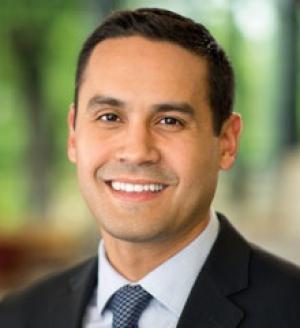
Eric D. Barreto Comparing myself to an aging piece of technology might not have been the smartest move. In the cover letter I sent with my application to Luther Seminary, I noted that I hoped that my students would someday see my teaching as they might an old computer with..

Cláudio Carvalhaes Associate Professor McCormick Theological Seminary The classroom is a microcosm of theological education. It changes and perpetuates ideas, behaviors and ideologies. But the classroom is a result and consequence of a larger scheme of structural practices and worldviews. What I have seen in these 8 years of teaching is that everything in theological education is so interconnected. Leadership; faculty composition; faculty meetings; public policies; by-laws; conferences; worship services; syllabi and chosen pedagogies; composition of students’ races; social classes and theological backgrounds, chapels, everything composes a temporary mosaic of what and who schools are and want to be. While patriarchalism, sexism, cultural/identity differences, and
Wabash Center Staff Contact
Sarah Farmer, Ph.D
Associate Director
Wabash Center
farmers@wabash.edu